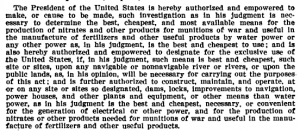How do you make a 1150-ton nuclear reactor pressure vessel disappear?
In 1980, the heaviest load in state history crawled through East Tennessee toward the Phipps Bend nuclear plant, a TVA venture located near Surgoinsville. A nuclear reactor pressure vessel so large strengtheners had to be added to the roads and bridges to prevent crumbling and collapse.
The nuke plant never materialized, supposedly due to falling energy prices.
If you were old enough to remember the reactor coming to Hawkins County, chances are you still haven’t forgotten it. Power lines had to be raised up and roads were shut down for the reactor and its entourage. Person after person I’ve talked to vividly remembers the reactor arriving…but no one knows when it left.
Missing documents about Phipps Bend reactor
I sent a Freedom of Information Request to TVA to determine the fate of the reactor pressure vessel. After several weeks, the only document the FOIA officer was able to find was a letter from the Chattanooga TVA office to Chris Umberger of Dewberry and Davis. The letter first noted the original transfer of the reactor (and land surrounding it) from TVA to Phipps Bend Joint Venture; it then went on to indicate PBJV was going to sell the reactor to Dewberry and Davis for scrap.
1989 Letter: TVA Transfers Nuke Reactor Pressure Vessel to Dewberry and Davis
At the least, it is an interesting chain of ownership. The problem is, Dewberry and Davis is not a salvage company (now known as Dewberry). They are major players in the military industrial complex. See “Wright receives President’s medal from the Society of American Military Engineers” -dewberry.com
Mysterious buildings constructed near the reactor
Without any other documentation existing, it is hard to know precisely when Dewberry took possession of the reactor. But we do know that by April of 1990, Claude Cain, a member of the Industrial Board and contractor himself, had begun work on a spec building at Phipps Bend that comprised 50,000 square feet.

To “spec” means building something and speculating that someone looking for real estate will find it desirable and purchase it after it was built. In other words, there was no buyer, there was no interest, yet it was built anyway under the guise it would help attract businesses to the area.
Chris Umberger, of Dewberry and Davis, oversaw this Phipps Bend development project including the spec building built by Cain. Incidentally, Mr. Umberger later went on to work for Barge, Waggoner, Sumner and Cannon, Inc., a governmental engineering company based out of none of other than Oak Ridge, Tennessee. From bargewaggoner.com:
As the industry revives nuclear power generation options, we have provided critical studies in support of new nuclear reactor permitting. Barge Waggoner offers a wide array of planning, permitting, design, compliance, and remediation services for new energy facility startups and modifications to existing facilities engaged in coal-fired, hydroelectric, natural gas, solar, and nuclear power generation.
Eight months after the TVA letter was written, Dewberry and Davis secured approval from city council to spec a second 40,000 square foot building at Rogersville Industrial Park, a mere fifteen miles away.

To sum up, Dewberry, a well-known military engineering company, ends up with possession of the nuclear reactor at Phipps Bend. Almost immediately construction of a massive building with seemingly no purpose begins. Then a few months later, Rogersville City Council approves Dewberry and Davis’ bid to build another massive spec building a few miles away, again, without a buyer.
Al Gore arrives to the Phipps Bend site
Interestingly, a few days before the city council voted their approval on the second mysterious building at Rogersville Industrial Park, Senator Al Gore came to town to hail the development of Phipps Bend. Coincidence? Gore was a member of the Homeland Security and Governmental Affairs committee as well as the Armed Services committee. One of the aspects of defense the Armed Services committee oversaw was nuclear energy and its role in national security. Did Senator Gore come to Hawkins County to look in on the progress of the nuclear reactor’s relocation? Did Senator Gore come to town to meet with council members and persuade them to put the vote for Dewberry and Davis’ spec building through? “Senator Gore says Phipps Bend park is a ‘great site’“, Rogersville Review, Thurs. Aug 16, 1990
I have called the actual Phipps Bend Industrial Park. I have called the Hawkins County Sheriff. I have posted messages on the internet asking members of the Hawkins County community to come forward with any information about the missing reactor. I have called the courthouse. I have called environmental health. Each time I have received the same response- no one knows what happened to the 2.3 million pound reactor pressure vessel.
Even Chris Umberger, the Dewberry and Davis project manager at Phipps Bend and the recipient of the TVA letter that indicates his company was to take possession of the reactor, claimed he did not know what happened to the reactor during an April 16th phone interview. (Telephone interview transcript available upon request.)
Did the U.S. government utilize the engineering firm of Dewberry and Davis to place the the reactor underground using the spec buildings in Phipps Bend and Rogersville Industrial Park as cover? Once underground, were engineers able to use the massive caverns, underground river (it stretches almost the entire length of Cumberland Mountain), and possibly even old mines to move the reactor precisely where they wished? Did the reactor end up 40 miles away, near Cumberland Gap National Park? Perhaps one building was used to modify the reactor to make it more easily transported to the second site. I’m unsure. I just know that reactor pressure vessel has vanished into thin air, leaving behind the biggest elephant in the room for the United States government in 99 years.
Update December 2015: a second reactor pressure vessel is missing from Phipps Bend- find the story here.
